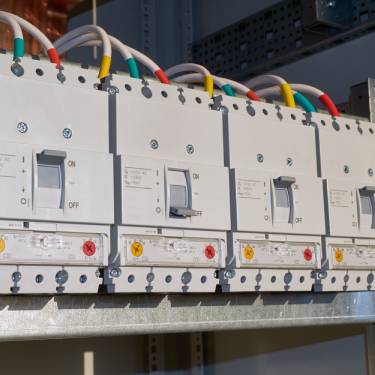
Circuit breakers might not be the most glamorous parts of an industrial plant, but they are undeniably some of the most important. These systems protect equipment, prevent downtime, and safeguard personnel from electrical hazards.
Knowing more about circuit breakers in industrial plants will help you maintain a safe and efficient operation. Read on to learn more!
Types of Circuit Breakers in Industrial Settings
Circuit breakers come in different types, each suited to unique industrial applications. The most common are:
- air circuit breaker (ACB)—ideally used for high-current applications
- molded case circuit breaker (MCCB)—versatile for a range of current ratings
- miniature circuit breaker (MCB)—often used for smaller or lower-load equipment
- vacuum circuit breaker (VCB)—excel in high-voltage systems
Choosing the right type of breaker depends on your specific operational needs. Understanding the distinctions, such as each breaker’s interrupting capacity and environmental tolerance, ensures that your systems stay protected under all conditions.
Common Circuit Breaker Problems and Solutions
Like any electrical component, circuit breakers aren’t immune to issues. Common problems include overheating, which occurs from prolonged operation near full capacity, and tripping, often triggered by overloads or internal faults. Worn-out contacts also limit a breaker’s ability to disrupt a current effectively.
Addressing these issues starts with regular inspections to spot signs of wear or overuse. Ensure loads align with the breaker’s rating, and don’t overlook the importance of cleaning, as dust and debris may cause defects. Immediate troubleshooting and prompt professional servicing, when necessary, prevent minor issues from becoming major headaches.
Circuit Breakers and Safety in Industrial Plants
Safety is where circuit breakers truly shine. They are your first line of defense during electrical faults, preventing fires, equipment damage, and operator injuries. Properly functioning breakers ensure currents get cut off quickly when anomalies arise, such as short circuits or overloads.
Ensure all circuit breakers meet industrial codes and regulations to improve safety standards. Conduct routine testing to verify performance. Additionally, train staff on the dangers of resetting tripped breakers without investigating underlying causes—this simple measure saves lives and equipment.
Best Practices for Maintaining Circuit Breakers
Taking care of your circuit breakers keeps them functional and extends their lifespan. Start with scheduled maintenance checks, such as inspecting for visible damage and loose connections. Test interrupting capabilities regularly to confirm that the breaker handles potential faults as intended. For high-load industrial systems, use thermography inspections to detect heat anomalies early.
Look for signs of a tripped circuit during your inspection, such as equipment failure. For instance, one sign of industrial electric motor failure is frequent tripping of circuit breakers as the motor draws more current than it is capable of handling. Additionally, replace aging components proactively. Don’t wait for parts to fail—frequent failure underlines the need for refurbishing or upgrading sooner rather than later.
Circuit breakers are vital to keeping industrial operations safe, efficient, and reliable. Understanding circuit breakers in industrial plants saves operations from unnecessary costs and risks. Take charge of your industrial plant’s safety today by implementing these best practices. If in doubt, don’t hesitate to consult an experienced electrical professional—they’ll ensure your circuit breakers perform optimally.
Bio: Casey is a passionate copyeditor highly motivated to provide compelling SEO content in the digital marketing space. Her expertise includes a vast range of industries from highly technical, consumer, and lifestyle-based, with an emphasis on attention to detail and readability.




















